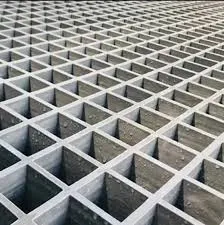
-
 Afrikaans
Afrikaans -
 Albanian
Albanian -
 Amharic
Amharic -
 Arabic
Arabic -
 Armenian
Armenian -
 Azerbaijani
Azerbaijani -
 Basque
Basque -
 Belarusian
Belarusian -
 Bengali
Bengali -
 Bosnian
Bosnian -
 Bulgarian
Bulgarian -
 Catalan
Catalan -
 Cebuano
Cebuano -
 China
China -
 China (Taiwan)
China (Taiwan) -
 Corsican
Corsican -
 Croatian
Croatian -
 Czech
Czech -
 Danish
Danish -
 Dutch
Dutch -
 English
English -
 Esperanto
Esperanto -
 Estonian
Estonian -
 Finnish
Finnish -
 French
French -
 Frisian
Frisian -
 Galician
Galician -
 Georgian
Georgian -
 German
German -
 Greek
Greek -
 Gujarati
Gujarati -
 Haitian Creole
Haitian Creole -
 hausa
hausa -
 hawaiian
hawaiian -
 Hebrew
Hebrew -
 Hindi
Hindi -
 Miao
Miao -
 Hungarian
Hungarian -
 Icelandic
Icelandic -
 igbo
igbo -
 Indonesian
Indonesian -
 irish
irish -
 Italian
Italian -
 Japanese
Japanese -
 Javanese
Javanese -
 Kannada
Kannada -
 kazakh
kazakh -
 Khmer
Khmer -
 Rwandese
Rwandese -
 Korean
Korean -
 Kurdish
Kurdish -
 Kyrgyz
Kyrgyz -
 Lao
Lao -
 Latin
Latin -
 Latvian
Latvian -
 Lithuanian
Lithuanian -
 Luxembourgish
Luxembourgish -
 Macedonian
Macedonian -
 Malgashi
Malgashi -
 Malay
Malay -
 Malayalam
Malayalam -
 Maltese
Maltese -
 Maori
Maori -
 Marathi
Marathi -
 Mongolian
Mongolian -
 Myanmar
Myanmar -
 Nepali
Nepali -
 Norwegian
Norwegian -
 Norwegian
Norwegian -
 Occitan
Occitan -
 Pashto
Pashto -
 Persian
Persian -
 Polish
Polish -
 Portuguese
Portuguese -
 Punjabi
Punjabi -
 Romanian
Romanian -
 Russian
Russian -
 Samoan
Samoan -
 Scottish Gaelic
Scottish Gaelic -
 Serbian
Serbian -
 Sesotho
Sesotho -
 Shona
Shona -
 Sindhi
Sindhi -
 Sinhala
Sinhala -
 Slovak
Slovak -
 Slovenian
Slovenian -
 Somali
Somali -
 Spanish
Spanish -
 Sundanese
Sundanese -
 Swahili
Swahili -
 Swedish
Swedish -
 Tagalog
Tagalog -
 Tajik
Tajik -
 Tamil
Tamil -
 Tatar
Tatar -
 Telugu
Telugu -
 Thai
Thai -
 Turkish
Turkish -
 Turkmen
Turkmen -
 Ukrainian
Ukrainian -
 Urdu
Urdu -
 Uighur
Uighur -
 Uzbek
Uzbek -
 Vietnamese
Vietnamese -
 Welsh
Welsh -
 Bantu
Bantu -
 Yiddish
Yiddish -
 Yoruba
Yoruba -
 Zulu
Zulu
frp duct system
Understanding FRP Duct Systems A Comprehensive Overview
Fiber-Reinforced Plastic (FRP) duct systems have emerged as a vital component in the modern construction and industrial sectors due to their exceptional properties and versatility. Comprising a matrix of plastic reinforced with fibers, often made from glass, carbon, or aramid, FRP ducts offer a multitude of advantages over traditional materials such as metal and concrete.
Key Advantages of FRP Duct Systems
1. Corrosion Resistance One of the standout features of FRP duct systems is their exceptional resistance to corrosion. Unlike metal ducts that can degrade over time when exposed to moisture and various chemicals, FRP ducts maintain their structural integrity and performance in harsh environments. This makes them an ideal choice for industries like chemical processing, wastewater treatment, and coastal installations where corrosive elements are prevalent.
2. Lightweight yet Strong The lightweight nature of FRP materials significantly eases the handling, installation, and transportation processes, reducing labor costs and time. Despite their lighter weight, FRP ducts provide remarkable strength and can withstand substantial pressure and stress, ensuring longevity and reliability.
3. Thermal Insulation FRP duct systems offer superior thermal insulation properties compared to traditional materials. This is particularly beneficial in applications where temperature control is critical, such as HVAC systems. The insulation helps in maintaining desired temperatures, leading to energy savings and increased efficiency.
4. Design Flexibility FRP ducts can be manufactured in various shapes and sizes, allowing for customized solutions tailored to specific requirements. Their design flexibility enables engineers to create complex layouts that can accommodate diverse installation conditions, thereby optimizing space usage.
frp duct system

5. Environmental Benefits As sustainability becomes an increasingly important consideration in construction and manufacturing, FRP materials provide an environmentally friendly alternative. They can be produced using recycled materials and are also recyclable at the end of their lifecycle, reducing their overall environmental impact.
Applications of FRP Duct Systems
The versatility of FRP duct systems makes them applicable in a wide range of sectors. In the HVAC industry, they are commonly used for air distribution systems, leveraging their lightweight and corrosion-resistant properties to enhance efficiency and longevity. In the chemical sector, FRP ducts are utilized for the conveyance of aggressive chemicals, ensuring safety and preventing leaks through their durable construction.
Furthermore, in the field of renewable energy, FRP ducts are used in wind turbine systems, where their strength-to-weight ratio is essential for performance. Similarly, in the telecommunications industry, FRP materials find applications in the protection of cables and data lines, offering superior durability against environmental factors.
Conclusion
In summary, FRP duct systems represent a significant advancement in material technology, offering a range of benefits that address the challenges of traditional duct materials. Their corrosion resistance, lightweight nature, thermal insulation properties, design flexibility, and environmental advantages make them an attractive solution for various industries. As technology progresses and industries continue to prioritize efficiency and sustainability, the use of FRP ducts is likely to expand, paving the way for innovative applications and improved infrastructure solutions. The future of duct systems appears bright with FRP technology leading the charge towards smarter and more resilient construction practices.









